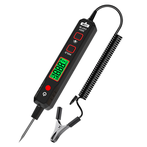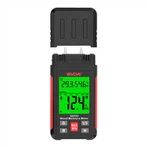Why should a pH electrode be soaked? How to properly soak a combined pH electrode?
The pH electrode must be soaked before use, because the pH bulb is a special glass membrane. There is a very thin gel layer on the surface of the glass membrane. It can have a good effect on the hydrogen ion in the solution only when it is fully wet. Meanwhile, soaking the glass electrode can greatly reduce the asymmetric potential and stabilize it. PH glass electrodes can generally be soaked in distilled water or pH 4.00 buffer solution. It is usually better to soak in a pH 4.00 buffer solution for 24 hours or longer, depending on the thickness of the glass film and the degree of electrode aging. At the same time, the liquid interface of the reference electrode also needs to be soaked. Because if the liquid interface dries up, the potential at the liquid interface will increase or become unstable. Therefore, the soaking solution of the reference electrode must be consistent with the external reference solution of the reference electrode, which is a 3.3mol/L KCl solution or saturated KCl solution. The soaking time is generally a few hours.
Therefore, for pH composite electrodes, they must be immersed in a pH 4.00 buffer solution containing KCl in order to simultaneously affect both the glass bulb and the liquid interface. Special attention should be paid here, as in the past, people were accustomed to soaking single pH glass electrodes in deionized water or pH 4 buffer solution. Later, when using pH composite electrodes, this soaking method was still used, and even incorrect guidance was provided in the user manual of some incorrect pH composite electrodes. The direct consequence of this incorrect soaking method is that a pH composite electrode with good performance becomes an electrode with slow response and poor accuracy. Moreover, the longer the soaking time, the worse the performance, because after a long soaking time, the KCl concentration inside the liquid interface (such as inside the sand core) has greatly decreased, resulting in an increase and instability of the liquid interface potential. Of course, as long as the electrode is re soaked in the correct soaking solution for a few hours, it will still recover. In addition, pH electrodes should not be immersed in neutral or alkaline buffer solutions, as prolonged immersion in such solutions can cause the pH glass membrane to respond slowly. The correct preparation of pH electrode soaking solution: Take a packet of pH 4.00 buffer (250mL), dissolve it in 250mL of pure water, add 56g of analytical grade KCl, heat appropriately, and stir until completely dissolved.






